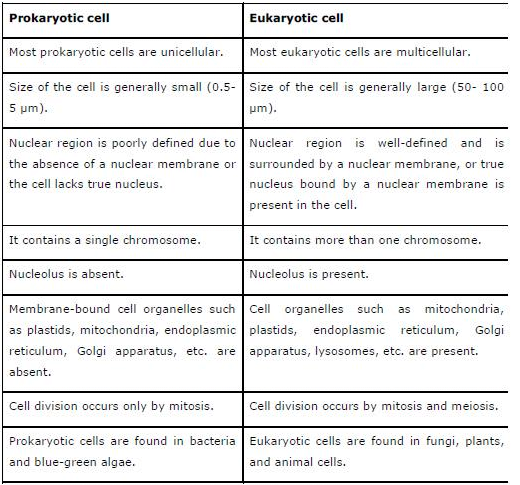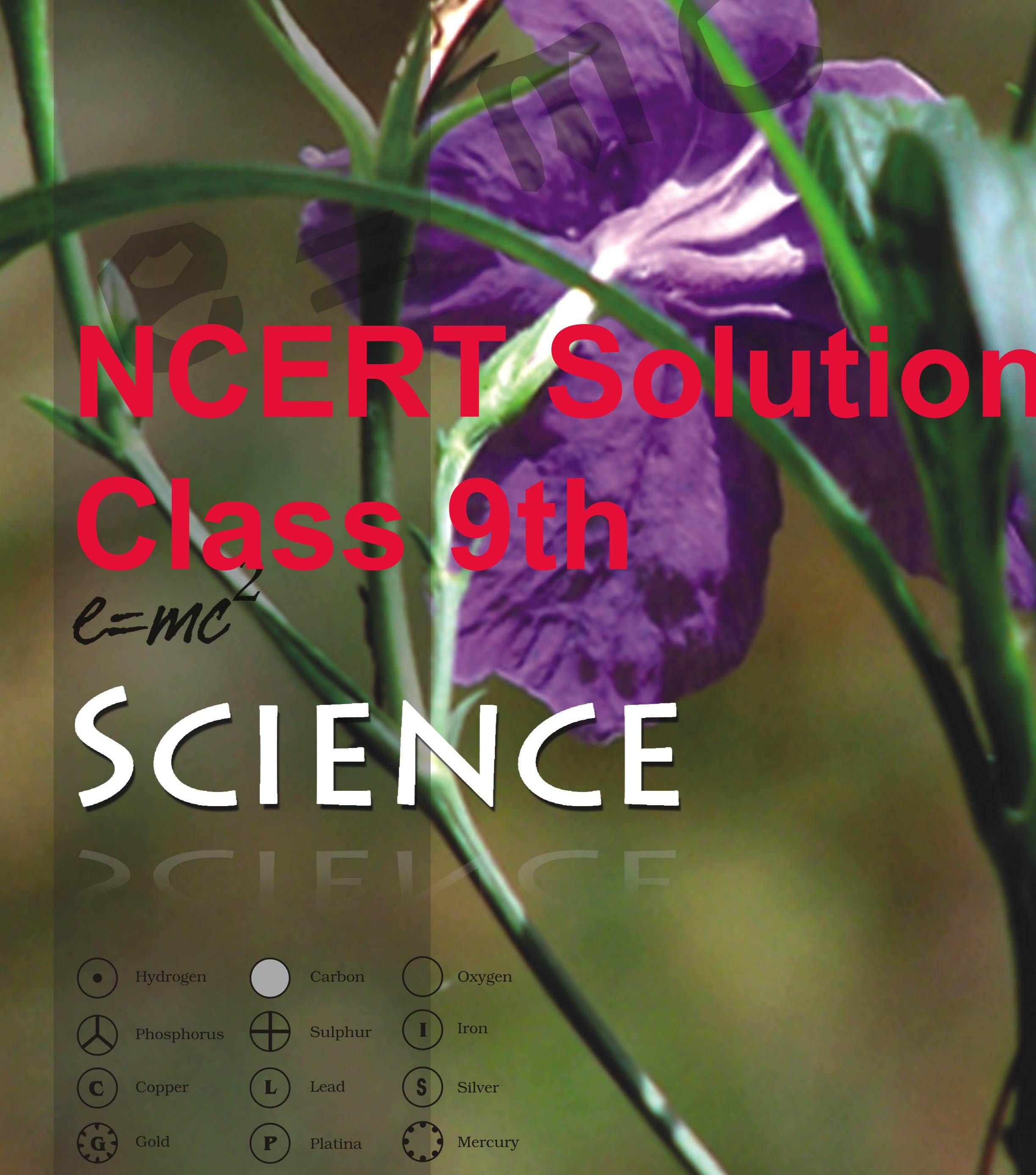NCERT Solution Class 9th Science Ch 5: The Fundamental Unit of Life, NCERT Solutions for Class 9 Science (Chemistry) Chapter 5 – The Fundamental Unit of Life solved by Expert Teachers as per NCERT (CBSE) Book guidelines. These solutions are part of NCERT Solutions for Class 9 Science. Here we have given Class 9 NCERT Science Textbook Solutions for Chapter 5 The Fundamental Unit of Life.
NCERT
Solution Class
9th Science Ch 5:
The Fundamental Unit of Life
[table id=1 /]
1: Who discovered cells and how?
Answer: Cells were discovered in 1665 by an English Botanist, Robert Hooke. He used a primitive microscope to observe cells in a cork slice.
2: Why is the cell called the structural and functional unit of life?
Answer: Cells constitute various components of plants and animals. A cell is the smallest unit of life and is capable of all living functions. Cells are the building blocks of life.
This is the reason why cells are referred to as the basic structural and functional units of life. All cells vary in their shape, size, and activity they perform. In fact, the shape and size of the cell is related to the specific functions they perform.
NCERT Solution Class 9th Science Ch 5: The Fundamental Unit of Life
See Also: NCERT Solution Class 9th Science Ch 4: Structure Of The Atom
1: How do substances like CO2and water move in and out of the cell? Discuss,
Answer: The cell membrane is selectively permeable and regulates the movement of substances in and out of the cell.
Movement of CO2:
CO2 is produced during cellular respiration. Therefore, it is present in high
concentrations inside the cell. This CO2 must be excreted out of the cell. In the cell’s external environment, the concentration of CO2 is low as compared to that inside the cell.
Therefore, according to the principle of diffusion, CO2 moves from a region of higher concentration (inside the cell) towards a region of lower concentration (outside the cell). Similarly, O2 enters the cell by the process of diffusion when the concentration of O2 inside the cell is low as compared to its surroundings.
Movement of water:
Water moves from a region of high concentration to a region of low concentration through the plasma membrane. The plasma membrane acts as a semi-permeable membrane, and this movement of water is known as osmosis. However, the movement of water across the plasma membrane of the cell is affected by the amount of substance dissolved in water.
2: Why is the plasma membrane called a selectively permeable membrane?
Answer: The cell membrane or the plasma membrane is known as a selectively permeable membrane because it regulates the movement of substances in and out of the cell. This means that the plasma membrane allows the entry of only some substances and prevents the movement of some other materials.
NCERT Solution Class 9th Science Ch 5: The Fundamental Unit of Life
See Also: NCERT Solutions for Class 9 Science Chapter 5
Question 1:
Fill in the gaps in the following table illustrating differences between prokaryotic and eukaryotic cells.
1: Can you name the two organelles we have studied that contain their own genetic material?
Answer: Mitochondria and plastids are the two organelles that contain their own genetic material. Both these organelles have their own DNA and ribosomes.
2: If the organization of a cell is destroyed due to some physical or chemical influence, what will happen?
Answer: Cell is the smallest unit of life, which is capable of all living functions. If the organization of a cell is destroyed due to some physical or chemical influence, then the ability of the cell to perform all living functions such as respiration, nutrition, excretion, etc. would be affected.
3: Why are lysosomes known as suicide bags?
Answer: Lysosomes are membrane-bound vesicular structures that contain powerful digestive enzymes. These enzymes are capable of breaking down any foreign food particle or microbes entering the cell. Sometimes, lysosomes can cause self-destruction of a cell by releasing these digestive enzymes within the cells. Hence, they are also known as ‘suicidal bags’.
4: Where are proteins synthesized inside the cell?
Answer: Ribosomes are the site for protein synthesis. Ribosomes are very small structures found either in a free state, suspended in the cytoplasm, or attached to the surface of the endoplasmic reticulum. They are composed of ribonucleic acids and proteins.
Exercises
1: Make a comparison to write down ways in which plant cells are different from animal cells.
Answer: The cells of animals and plants have the following differences:

NCERT Solution Class 9th Science Ch 5: The Fundamental Unit of Life
See Also: NCERT Solutions for Class 9th: Ch 5 The Fundamental Unit of Life
2: How is a prokaryotic cell different from a eukaryotic cell?
Answer: Difference between a prokaryotic cell and a eukaryotic cell:

3: What would happen if the plasma membrane ruptures or breaks down?
Answer: The Plasma membrane is a selectively permeable membrane of the cell that maintains its homeostasis, i.e., the constant internal composition of the cell. If it ruptures or breaks down the constant internal chemical composition of the cell will be lost and it will not be able to perform its basic functions. Such a cell with the ruptured plasma membrane is killed.
4: What would happen to the life of a cell if there is no Golgi apparatus?
Answer: The materials synthesized in the ER are stored, sorted, modified, packaged, and dispatched to various targets inside and outside the cell through the Golgi apparatus packs products in vesicles, the secretory vesicles. In some cases complex sugars e.g. cellulose, may be made from simple sugars in the Golgi apparatus. The Golgi apparatus is also involved in the formation of the cells which will not be possible if the Golgi apparatus is not there.
5: Which organelle is known as the powerhouse of the cell? Why?
Answer: Mitochondria are known as the powerhouse of the cell because they contain enzymes that are needed for stepwise oxidation of foodstuffs (carbohydrate, fats, and lipids) present in the cells to CO2 and water. Oxidation of food releases energy which is used to form high-energy ATP (adenosine triphosphate) molecules. ATP is known as Energy Currency of the cell and it is used as cellular fuel. Energy stored in ATP is used to bring about energy-requiring activities of the cell such as photosynthesis, protein synthesis, and muscle contraction.
6: Where do the lipids and proteins constituting the cell membrane get synthesized?
Answer: Rough Endoplasmic Reticulum (RER) – synthesizes proteins constituting cell membranes.
Smooth Endoplasmic Reticulum (SER) – synthesizes lipids constituting the cell
membrane.
7: How does Amoeba obtain its food?
Answer: Amoeba has a flexible cell membrane. It enables amoeba to engulf in food by the process called endocytosis.
8: What is osmosis?
Answer: The diffusion of water or solvent through a semi-permeable membrane from a solution of lower concentration of solutes to a solution of higher concentration of solutes, to which the membrane is relatively impermeable, is called osmosis.

Hi, I’m Dev Kirtonia, Founder & CEO of Dev Library. A website that provides all SCERT, NCERT 3 to 12, and BA, B.com, B.Sc, and Computer Science with Post Graduate Notes & Suggestions, Novel, eBooks, Biography, Quotes, Study Materials, and more.






